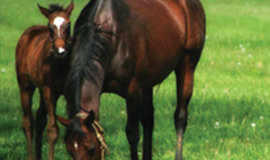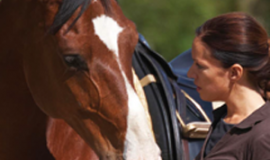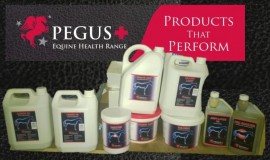Congratulations to Sven Hanley netting a 1st and 2nd with Cassana winning the Grand Prix at Portmore Equestrian Centre and Quanbel in second. What a great start to the season for the Pegus Ambassador Rider .
Pegus News
Liffey Mills and Pegus Horse Feed Nutritional Workshop
Liffey Mills and Pegus Horse Feed Nutritional Workshop . The workshops seen in excess of over 100 attendees who engaged the Speakers Roslyn Drew talking on Paddock and Grassland management and Declan Cullen of Pegus speaking on Fuelling the Equine athlete.Attendee Rebecca Brewer said “the speakers where absolutely fantastic, so knowledgable and informative. I learned loads of very valuable knowledge that I can use for my horse’s diets just the facts of quality over quantity. I have used Pegus now for quite some time but knowing what to give and…
How Energy is measured in Horse Feed
What are the units used to measured energy content in horse feed , Click on Link for full article Understand the energy content of feed
Pegus Fuels Gold Cup Winner
Michael Winters and Rebel Fitz wins the Grade 1 Powers Gold A 15 lengths verdict over sole remaining rival Bright New Dawn certainly fails to tell the full story, with the race totally changing complexion after Ballycasey fell two out.The 11/8 favourite had made the running to that point and was still travelling well with about a length advantage when making an uncharacteristic blunder at the penultimate fence.Rebel Fitz was left in front and Barry Geraghty soon had the 2/1 chance clear to record an ultimately decisive victory in…
Pegus Point to Point Final at Cork Racecourse
Pulled Mussel had a easy victory under James ‘Corky’ Carroll , ran out a facile winner of the Pegus Horse Feed Point-To-Point Series Final Flat Race, for trainer Robert Tyner. The son of Craigsteel won his point-to-point at Dromahane on his third career start in March, and having opened a 4/6 chance this morning, he went from 4/9 to 2/5 on-course. Having tracked the leaders throughout, the victorious bay travelled best as they entered the home straight, and when given a slap down the shoulder he went on, stretching clear a furlong and a half…
Planning a Diet for a Laminitic Horse
A laminitis diagnosis can be a life-changing event for both a horse and an owner. And when it comes to dietary changes for laminitic horses, owners might not know where to start. To that end, Jennifer A. Wrigley, CVT, the director of nursing for the University of Pennsylvania School of Veterinary Medicine’s New Bolton Center Equi-Assist Home Care program, offered horse owners some tips for transitioning to a diet suitable for a laminitic horse. Ultimately, Wrigley said, properly feeding a horse with laminitis boils down to the answers to four…
Health Concerns Related to Equine Obesity
Health Concerns Related to Equine Obesity Body condition, adiposity, and weight can affect a horse’s overall health status. Here’s we’ll discuss some of the specific health concerns for horses that are too fat (obese). Obesity is a serious health condition, but, unfortunately, many horse owners still look at a fat pony and think how cute it is, or look at a fat horse and compliment its big bone. However, science has now shown that adipose tissue (body fat) is more than merely a storage organ for fat (and therefore calories).…
Pegus CIC** International
The Pegus CIC** International held at The Kilguilkey International in Co Cork ,Kilguilkey House is an equestrian facility near Mallow, Co. Cork.Close to our Pegus manufacturing facility in Lambartowns Set in acres of prime grassland, Kilguilkey House is in the heart of Duhallow hunting country. It seen some of Irelands leading event riders with some of the up-coming young horses tackle the Eric Winters course , and build by Danny Dulohery. The over all winner was Joseph Murphy riding Westwinds Hercules 2nd was local rider Patricia Ryan on Dunrath Eclipse…







